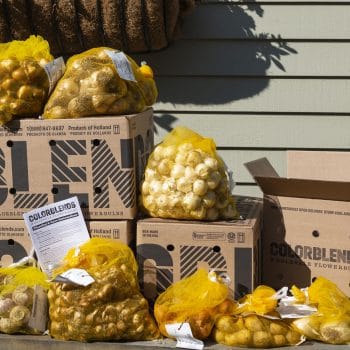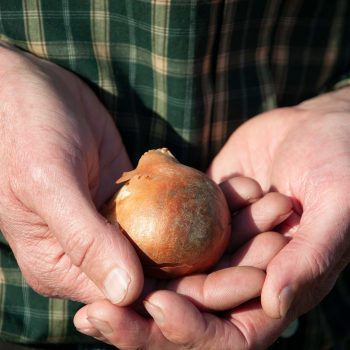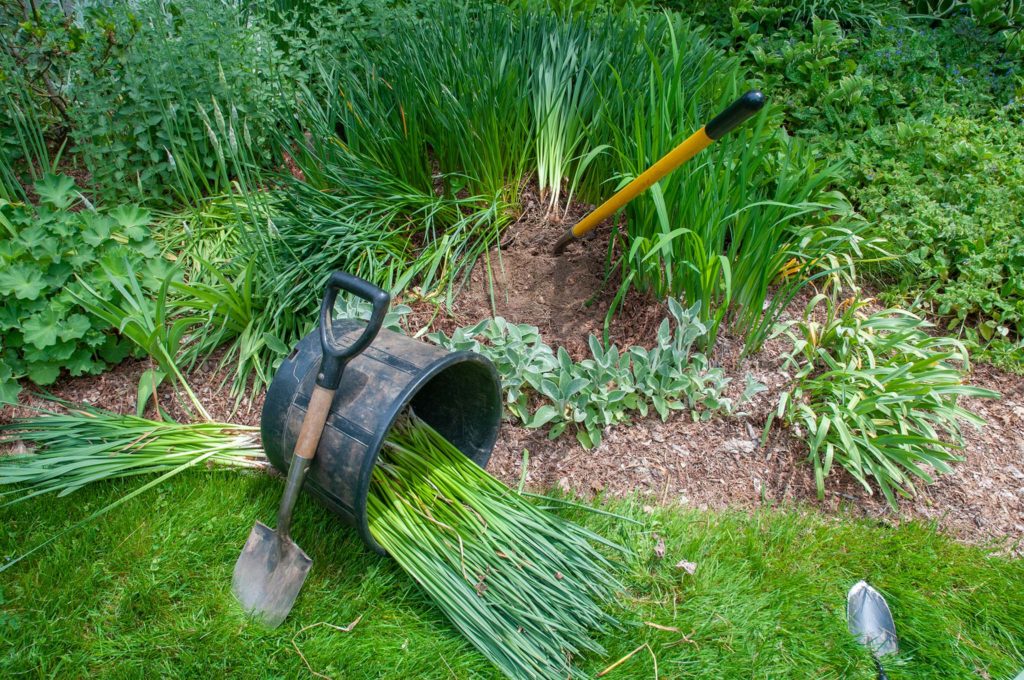
Digging and dividing daffodils, like planting them, requires some effort. But there may come a time when bulbs need to be moved to a new location or divided to improve flowering.
Many daffodils have the ability to grow and flower well for several years. As time passes, though, you may decide that a planting needs to be moved to another part of the garden or landscape.
Even if a daffodil doesn’t need to be moved, you may determine that it needs to be divided: lifted from the soil, thinned, and replanted, the excess bulbs planted elsewhere or given away. If you note that flowering has declined but foliage growth is lush, your daffodil may be trying to tell you that its bulbs have become crowded. Another possible sign that division may be needed: The foliage collapses after it rains or on a warm day and struggles to pick itself back up.
Whether you’re moving or dividing, the technique is the same. All you need for the job is standard garden tools and a healthy dose of elbow grease.
Timing for Dividing Daffodils
The ideal time to be moving or dividing daffodils is when the foliage has collapsed and has turned mostly but not completely brown. For most daffodils, this time comes in late spring or early summer. By then the bulbs have stored up the energy they need to grow and bloom again next spring, but the leaves are still there to tell you where the bulbs are. And if the leaves are still attached to the bulbs, they help you track down the bulbs as you dig.
What if you can’t or don’t want to wait until the ideal time? Daffodils can be lifted any time after bloom. Truth be told, they can be moved while they are in bloom. Dig with care to ensure that the foliage is not cut or pulled away from the bulbs. Replant immediately and water thoroughly. Daffodils moved while “in the green” may not be happy about the disruption. They will likely flop and turn brown prematurely. But chances are very good that they will survive the experience; many will bloom the following spring.
Note: The following instructions assume that you have waited until the foliage is brown or nearly brown before lifting daffodils.
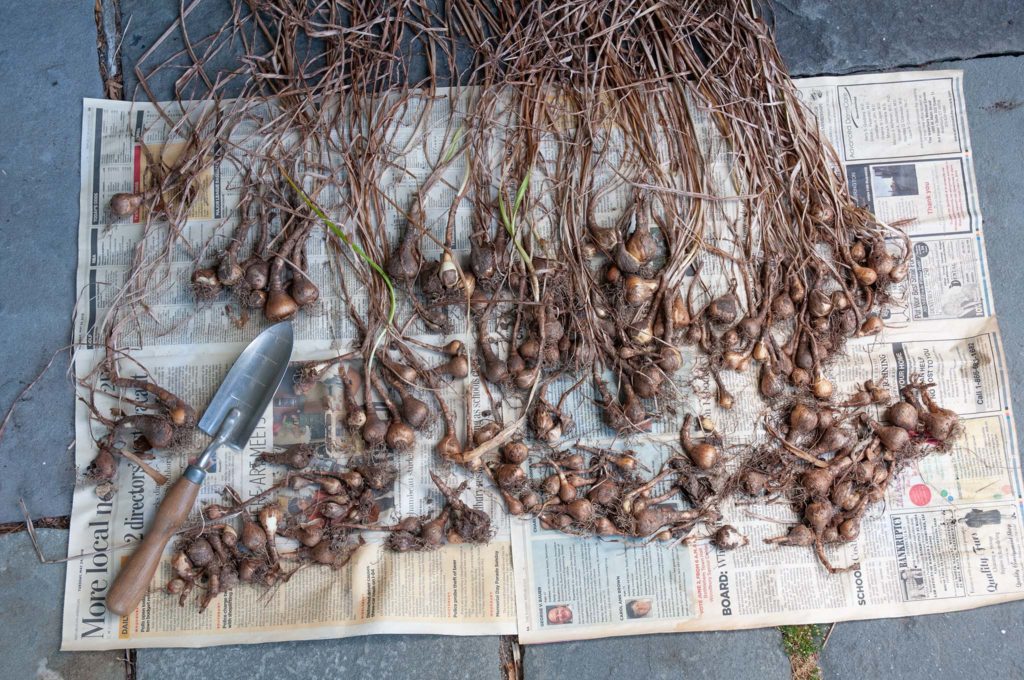
After digging comes drying. If you intend to store the bulbs over summer, you need to dry them first. Lay them out on sheets of newspaper in a sheltered location for 7–10 days. Then gently brush away dried soil, cut off remaining foliage and place the bulbs in mesh bags.
Lifting the Bulbs
Digging, like planting, requires effort and some determination. Obvious as it may seem, you want to start digging on one side of the planting and work your way to the other. Your tool of choice will depend on your soil type—shovel, pick or dynamite, as the case may be. If you are serious about extricating every bulb, the job is best done while kneeling. One of those miniature shovels found at garden centers and home and hardware stores comes in handy for close work. Place the bulbs in a bucket or basket as you lift them. Leave any foliage that does not come free during digging attached to the bulbs.
It is inevitable that you will slice at least one bulb while digging. A bulb can survive a small nick. If you cut a bulb in half, it’s not worth the trouble to save it. Put it on the compost pile.
Immediate Replanting vs. Summer Storage
Once you have exhumed the bulbs, you have two choices: replant them immediately or store them for replanting in the fall. If you decide to replant right away, and foliage is still attached to some of the bulbs, leave it in place. Plant the bulbs the usual 4–6” deep. Then water thoroughly. One soaking is enough.
If you prefer instead to store the bulbs over summer and replant them in the fall, begin by drying the bulbs. Lay them—out of the weather—on sheets of newspaper for a week or so. Leave any attached foliage intact. When the leaves have turned brown and crispy, cut them away and gently brush chunks of soil from the bulbs with your fingers. (There is no need to be fastidious in your cleaning; do not wash the bulbs.)
Store the bulbs in mesh bags (old Colorblends bags are perfect for this) in a dry, well-ventilated place. If you have an unfinished basement, you can suspend the bags from floor joists; a fan is a good way to keep the air moving. If you don’t have a basement, a garage can serve, as long as it doesn’t get too hot inside. Also suitable: a carport or other outdoor covered space. Daffodils in storage appreciate fresh air.
Final Storage Tips
Don’t forget these two key steps when dividing daffodils and storing your bulbs:
-
Label each bag clearly. Write the variety name or a simple color description on every bag. Trust us—you won’t remember what’s inside three, four, or five months down the road, and labeling now will save confusion later.
-
Set a reminder to replant. Mark your calendar or set a reminder on your phone to replant the bulbs in the fall. Bulbs cannot be stored indefinitely; they need to be planted again that same fall to thrive. Waiting until the following year is not an option.
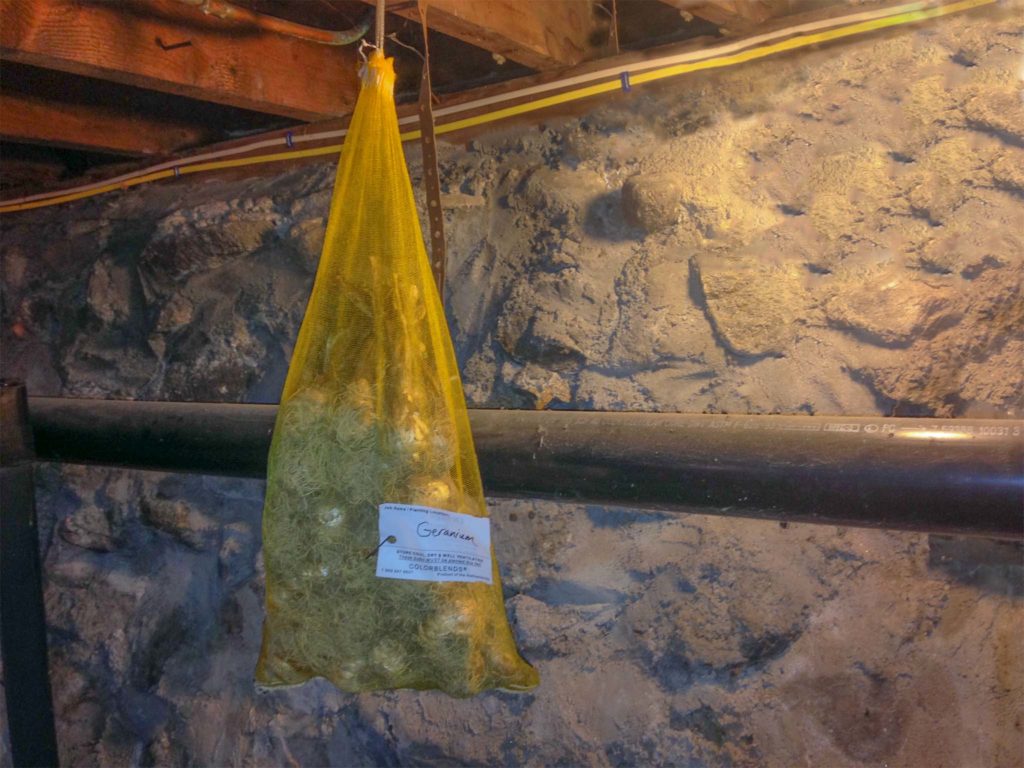
Summer storage. Bulbs should be stored over the summer in a reasonably cool and dry location, such as a basement or carport. Air circulation—natural or mechanical—helps keep fungus at bay. The bulbs MUST be replanted in fall. Mark your calendar!
Replanting Stored Bulbs
When fall comes back around, plant the bulbs as though you had just purchased them, 4-6” deep—deeper for large bulbs, not-so-deep for small ones. You will likely find that some bulbs have not survived storage. If a bulb is soft, it is dead. Don’t waste your time planting it. And if you don’t have the space or the energy to replant all of the bulbs? That’s easy: Share the wealth with a friend. Here are some Colorblends daffodils to check out from our collection.

